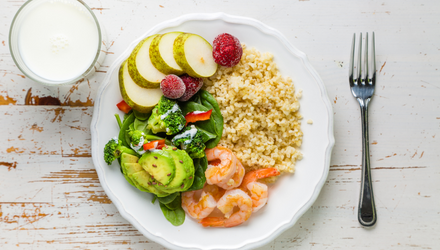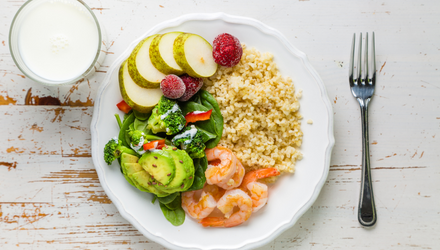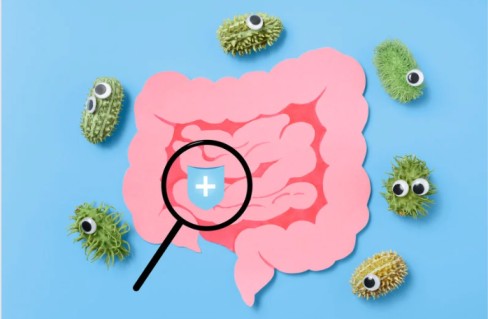Nutrition Labels
Most of the food you eat that comes in packaging or containers has a nutrition label. This label shows the suggested serving size for the food inside. The serving size can be listed in a variety of ways – i.e., 1/2 cup, 13 crackers, eight oz., or one piece.
Calories and specific nutrients are also listed on the nutrition label. This information is here to help you keep track of what you eat and make the based decisions for your health. Depending on the diet or eating style you are following, nutrition labels can help you determine what foods fit easily into your plan.

Sometimes, it’s not what you eat, but how much you eat that has the biggest impact on your weight. Food has calories (energy), carbohydrates, fat, protein, and a variety of nutrients. Each food is uniquely different and has a different nutrient breakdown. All foods can fit into a healthy and balanced diet, but portion control is equally important for weight management.
Sometimes, it’s not that easy. It can be really difficult to stay within suggested serving sizes. We often eat more or less than what is on the nutrition label. This is our portion size — the amount we choose to eat. For example, a suggested serving size for ice cream may be 1/2 cup. When you add ice cream to the bowl, you might be adding a cup or more without realizing it. Since this portion size is larger than what is suggested, you’re eating more calories, fat and sugar.
- Take Time to Measure Your Food. When you eat straight from the package, you may end up eating more than you realize. Instead, put your evening snack of popcorn in a bowl. Measure out a serving of nuts and put them in a sandwich bag for a snack while you work. Small changes can help you monitor what you are eating.
- Eat at the Table. Try not to eat while standing over the counter, in front of your computer or driving in the car. Mindless eating can lead to consuming larger portion sizes without your conscious awareness.
- Make it Easy. Stock your kitchen with tools to make meal planning easier. Invest in measuring cups, bowls of different sizes, Tupperware, and different sized glasses.
- Know the Tricks. Sometimes you’ll find yourself in situations where it’s hard to judge the appropriate portion size. Keep a few reminders in the back of your head. Three oz. of meat is similar in size to a deck of cards. One cup of food is roughly the size of a baseball. Two tablespoons is close to the size of a ping pong ball. Here are some additional healthy eating tips for measuring portion sizes.
As you work toward managing your portion sizes, the best thing you can do is to practice more mindful eating. Simply paying more attention to each bite can make a huge difference!



